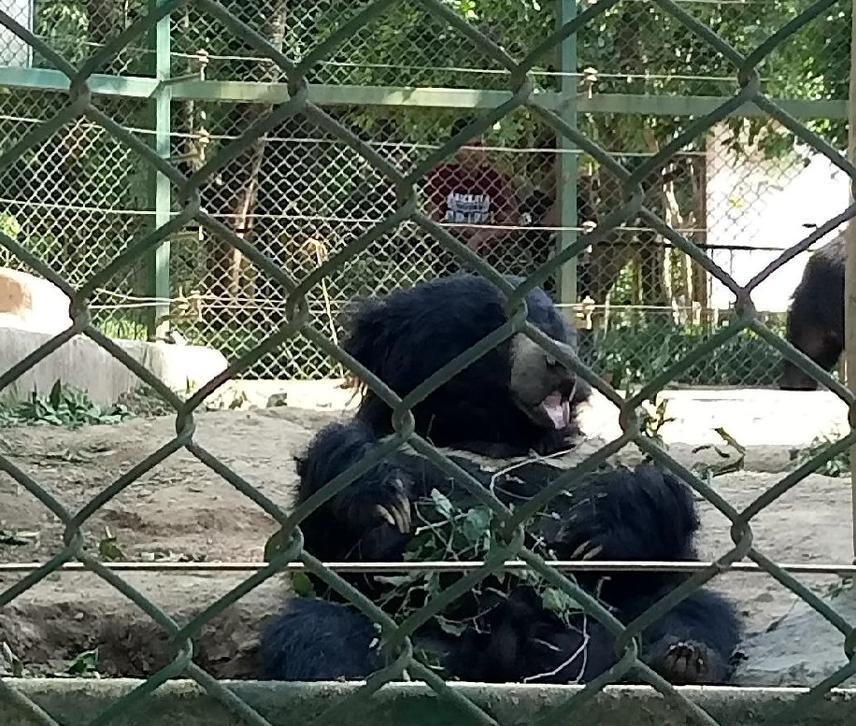Rajan Prasad Paudel
Sloth bear is a globally vulnerable and listed as a nationally endangered species in Nepal. It is one of the most feared species by people and every year many cases of human-bear conflicts are reported mostly from Chitwan National Park. We will explore the current distribution of Sloth bears in Chitwan National Park (CNP) and understand the factors that influence its habitat use. Through non-invasive genetic sampling the we will evaluate the current genetic structure and diversity of Sloth bear population in CNP. The causes of conflict and perceptions of people to bear conservation will be elucidated and conservation awareness programs will be conducted. Thus, the project will breach current barrier in Sloth bear (Melursus ursinus) conservation in Nepal by initiating ecological research and community awareness on Sloth bears in Nepal.

A sloth bear rescued and kept at central zoo in Nepal.
Three species of bears, Asiatic black bear (Ursus thibetanus), Tibetan brown bear (Ursus arctos pruinosus) and the Sloth bear (Melursus ursinus) are found in Nepal. Brown bear occur at the high mountain region, black bears in the middle mountains and Sloth bears in the Terai and foothills of Churia in southern parts of Nepal. Sloth bears are unique in many ways particularly because of their fondness for eating termites and ants known as myrmecophagy (Garshelis et.al. 1999). Their unique biology, ecological role and evolutionary significance makes them a focal point for conservation actions and public awareness on nature conservation. They are globally vulnerable, and Appendix I species in CITES. In Nepal, they are listed as an Endangered species and protected under National Parks and Wildlife Conservation Act and Regulation (Jnawali et.al.2011). However, current information on Sloth bears in Nepal is mostly based on obsolete information or limited incidental information or “ballpark” guesses.
The IUCN estimates that Sloth bear population have declined almost by 50 percent and expects this decline to continue rapidly. Their habitat has been lost, fragmented and encroached for agriculture, settlement and development of infrastructures. Climate change impacts have further increased threats to the species as the availability of food, water and other habitat resources have altered. Additionally, sloth bears have been captured from the wild for engagement as ‘dancing bears’ and as well as hunted for their body organs and use in traditional medicine. In other hand, human death and serious injury from Sloth bear attacks are also frequently reported giving rise to Human-Sloth bear conflicts. They are among most feared animal and one of the key wildlife species responsible for human causalities and injuries in Nepal (DNPWC, 2017) because of which local people develop negative attitude towards its conservation.
This project is conceived to breach current conservation barrier for Sloth bears by initiating ecological research and conservation awareness activities in Nepal. The project will provide much needed scientific information on the distribution, habitat use, genetic structure and diversity of Sloth bears from Nepal. Further, evaluation of patterns and causes of human-bear conflicts will be made. Through integration of ecological and social approach to conservation, this project will support the local government, research institutions, conservation agencies and communities for evidence-based planning and decision making to maintain viable sloth bear population co-existing in harmony with local communities.